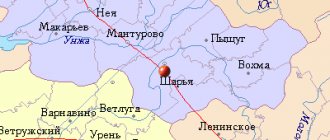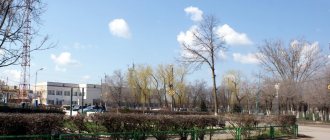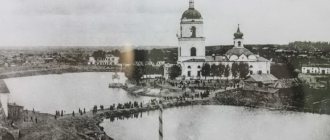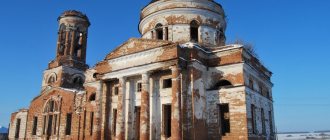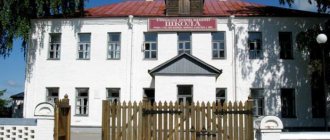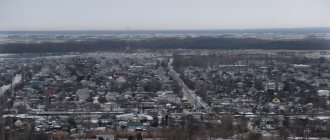One of the most ancient settlements in Russia is the city of Bui in the Kostroma region. It is not very popular among tourists, although it does have many attractions. Many archaeological excavations have been carried out on its territory and in the surrounding area, and even now local residents often find unique objects that belong to primitive times.
City `s history
The Kostroma region and Bui, in particular, have a very rich history. The small town was founded in the middle of the 15th century. It was then that the mother of Ivan the Terrible, Elena Vasilyevna Glinskaya, signed a decree in which she ordered the founding of a fortified fortress in the Korezhskaya volost, which was later called Bui-gorodok.
The structure erected on the Korega River was supposed to become a new outpost. His task was to guard the northeastern borders of the Moscow State . In those days, nomadic raids were often carried out on Russian lands, among them were:
- Chuvash;
- Mordvins;
- Kazan Tatars.
The fortress itself rose on an earthen rampart, and on the right and left sides it was washed by the rivers: Kostroma, Veksa. And on the third side, local residents dug a deep ditch, which they filled with water. In addition, there were watchtowers with sentinels along the perimeter, and palisades were installed near the walls. That’s why it was very difficult to get into the city.
At the end of the 17th century, the settlement received the status of a county town, after which it was decided to destroy the fortress, since it was no longer used for its intended purpose. And already in 1797, during the reign of Paul the First, it turned from a district town into a provincial town. Only five years later did he return to his previous status.
And in the summer of 2003 it became an urban district; at that time it occupied an area of 2119 hectares. During the same period, a new coat of arms was approved: on an azure field in the upper left corner there is a buoy, and in the lower right corner there is a silver anchor with four prongs, connected by a gold-colored rope. As for the population, according to the latest estimates, they took place in 2022, the number of citizens living in the city was 23,809 people.
In August 2022, a small town in Kostroma will celebrate its 483rd birthday . At the festive event, which will take place on the main square, there will be a concert, local artists and invited Russian pop stars will perform on stage. And with the onset of dusk, the sky will light up with hundreds of fireworks.
As for accommodation, there are several decent hotels in the village. No one will go hungry here either; there are good restaurants and inexpensive cafes with excellent service and delicious food on the territory. And the prices here are quite decent, unlike other tourist destinations.
By order of the Grand Duke, the Bui fortress was erected.
In the first third of the 16th century, the government of the Moscow State took a number of measures to ensure the security of the border with the Kazan Khanate. After one of the raids, the local population of the border volosts turned to the Grand Duke of Moscow with a request to build a fortress outside the walls of which, if something happened, they could hide from the enemy. And in 1536, by order of Grand Duke Ivan Vasilyevich, the Bui fortress was erected in Kostroma district.
A collection of chronicles called the Patriarch's or Nikon's Chronicle. Page 113
So, the city was set up, the name was given to the city, clearly understanding what the word “buoy” meant. Well, in our time they write different things about the toponym buoy: they believe that it is “an open, high place; area near the church with houses for the clergy; cemetery”, someone derives the meaning of the word from the adjective violent, capricious, there is a version according to which “buoy”. In fact, everything is simpler and much more logical. You just need to call for help “Finno-Ugric Sanskrit” - the Erzya language, the dialects of which were spoken by the chronicle tribes: Merya, Muroma, Meshchera, Mordovians. With the help of the Erzya language, as practice has shown, the most neglected toponymic mysteries in Russia can be solved.
Temples and cathedrals
In the town of Bui, Kostroma region, there are many religious sites, including some that are valuable from a historical point of view. Locals and experienced travelers highly recommend visiting the following places:
- The Church of St. Nicholas the Wonderworker is unique in that it is connected to the railway station. And in Soviet times it was even used as office space. The building was built in 1913, and it was originally planned that a chapel would stand in its place. But still, the decision was made to build a temple. Now you can pray in it for a good road without leaving the platform. The architecture also deserves attention; the building is made in the Russian-Byzantine style.
- Church of the Resurrection of Christ. Another attraction of the village of Kostroma. The history of this ancient temple began in the middle of the 18th century, it was then that the first brick was laid. A small stone building stands in a very picturesque place. Church services continued even during the Soviet Union. Local residents are very proud of this religious site and consider it the main symbol of the city. Tourists should definitely visit this unique place and enjoy the beauty and decoration of the temple.
- The Chapel of Paraskeva Pyatnitsa was founded in the 17th century. At first it was a wooden building, but, unfortunately, it did not survive the fire. After that they decided to restore it, but they made it out of brick. Now this domed rotunda with a two-column portico and an octagonal dome is a historical property. In 2000, restoration work was carried out, after which the building was returned to its original appearance according to the surviving drawings. It is in this place that you can feel peace and get acquainted with the history of this town.
- Iakovo-Zheleznoborovsky Monastery was erected in the 14th century. It was founded by Jacob Zheleznoborovsky, who was canonized. Due to its location, the temple complex has repeatedly become the center of historical events; royalty and important people have been here. By the way, it was in this cathedral that the first False Dmitry took monastic vows. In the ancient temple you can also touch the relics of the saint and touch unique icons, which are also several hundred years old.
Modern Bui surprises with its green and well-groomed appearance. Walking along the streets you can see beautiful old mansions that amaze with their splendor. But when going for a walk, you should definitely buy a map or take a navigator, as it’s easy to get lost.
Watch in Bui how ONE photographer photographed ONE city for three decades
The exhibition of Galician photographer Mikhail Smodor is on display until September 14
KOSTROMATURS /September 7, 2022/ A photo exhibition of Mikhail Smodor is running in the Kostroma region in the city of Bui. The work of the Galich photographer of the early 20th century is presented in the Palace of Culture of Railway Workers. In fact, for Buev residents and guests of the city, this is a rare chance not only to see the Russian hinterland of the first third of the 20th century, but also to breathe a little into the history of the lake region. Art historians highlight the uniqueness of the surviving collection of Mikhail Markovich Smodor (1882 - 1944) in the fact that one master photographed one city over three decades. Whether he did this daily, out of duty, out of inspiration, or something else - in any case, today Galicians are the owners of the rarest author's photo chronicle of their hometown in Russia. Since 1906, he captured a lot of portraits, historical, everyday and genre scenes from the life of Galich and Rybnaya Sloboda. The Kostroma regional public local history organization “Kostroma Antiquity”, together with Galich local historians, began collecting glass and photographs of Smodor three years ago. During this time, several traveling exhibitions were organized in Galich itself, as well as Kostroma, Volgorechensk and even in the capital of Russia. In February 2016, as part of the XI International Month of Photography in Moscow “PHOTOBIENNALE 2016”, the Multimedia Art Museum provided five exhibition halls for 300 photographs by Mikhail Smodor. At the exhibition, which is currently on display in Buya, some of the photographs are presented to the general public for the first time. But the main thing that visitors pay attention to is the format of the project. The technical solution proposed by “Kostroma Antiquity” organically combined time, era and skill. Black and white photographs measuring 120x150 cm printed on large plastic sheets are deliberately not placed under glass. There are no glares, no distortion of light, but there is powerful energy. Not like the classics - “now they will come out of the paintings alive...”. It seemed to me, on the contrary, that you were being pulled into a funnel by the past. It is you who trustingly extend your hand to the photographer and step into his story, into the life of his Galich. The story, of course, is different: hard-working, playful, sedate, fishing, not always smiling...
So how are Bui and Galich connected?
in the photo are brothers Mark and Mikhail Smodory
At the exhibition you are greeted by a large portrait photograph of young people. These are brothers Mark and Mikhail Smodor. Mikhail Smodor's wife Faina Aronovna was from Bui. Both sons were born here. By the way, the Brother of the Galich photographer Mark also opened portrait photography in Buya in 1910 in the shop of the merchant Moskvin on Kostromskaya Street, but was not widely known.
The photo exhibition in Buya at the Palace of Culture of Railway Workers will run until September 14.
Read more in the article
TEXT and PHOTO ANASTASIA FISCHER
Cultural sites
The city is famous for the fact that both modern five-story buildings and ancient log huts coexist in the neighborhood. You can even find beautiful merchant houses from the 19th century.
Locals recommend visiting the following places:
- The local history museum opened in the village in the spring of 1946. This is a large complex, which includes two buildings and an annex. There is a large collection of exhibits that will tell you how Bui was founded and developed. There is also a gallery dedicated to the Great Patriotic War, where you can see weapons of those times and orders. For tourists with children, there is a room with animals, where small representatives are presented, for example, squirrels and hares, as well as very large ones in the form of a bear. And the building itself deserves attention; it is an architectural monument of federal significance.
- The locomotive depot opened in 1905, and for a long time it was the largest in the country. Even during the construction of this facility, the population tripled, as residents from all over the region came here. This is where you can see the locomotive turntable in action. In addition, on its territory there is one of the oldest steam locomotives, L-2218, built in 1953.
- In the vicinity of the city there are several Neolithic sites. “Vexa-8” dates back to the 6th millennium BC, and “Vexa-10” dates back to the 3rd millennium BC. e. Archaeologists not only from Russia, but also from all over the world come to this unique place. Research and archaeological excavations are carried out here. During the entire period of work, a huge number of relics were collected, these are household items, jewelry, and tools of labor of ancient people. Tourists can, if they wish, take part in the search for unique things.
- Wooden sculptures are another modern attraction of the small town. The mayor's office presented this gift for Bui's birthday. This is a whole complex of figures that were created from tree trunks. Moreover, local wood craftsmen were able to make them in three days. Looking at them, it seems as if they are growing out of the ground. Not only adult tourists, but also very young ones will be able to enjoy this amazing spectacle. By the way, you can take many beautiful and interesting photographs against their background.
You can view a list of all attractions and architectural sites on the official website of the city of Bui. You can also read useful information on Wikipedia.
( 1 ratings, average: 5.00 out of 5)
“Buoy” - a toponymic riddle of the Kostroma region
Friends! What language do you think the people who gave the city its name spoke? Everything is correct. The one with the help of which the toponym will be translated is motivated. I will repeat!
Motivation is the main criterion for assessing the translation of a toponym, in our case, the word “buoy”. Most likely, buy-city is the phrase “buye korod”, modified in oral transmission and then recorded in documents, that is, literally, a protected city.
NB! There is another version. The word “buoy” is “border”, meaning further danger.
How the words buye and korod, understandable to the population of the border borders of Muscovy, were transformed into buoy town - we, of course, will never know. But there are plenty of such situations when officials wrote down abracadabra of the aborigines because it was clear to them.
Yes, here is the coat of arms of the city of Bui - a vivid example of this. I think that at the end of the 18th century in the administration of the city of Bui, few people knew why the city was called that way, so comrades from the heraldic office depicted a float on the city coat of arms to mark a place on the water or the position of an anchor.
By the way, the name of the Veksa River is also translated using the Erzyan language. Vexa - Ve Kosa - where there is one (river). Indeed, Vexa is the only river that flows from Lake Galich. That is, the ancient hydronym accurately describes the main distinguishing feature of this river.
So, let’s summarize our small toponymic research.
Bui-gorod - Bui korod - a protected settlement.
A clearly motivated translation of the toponym. of the city of Bui will like it , time will tell. And we record this translation and continue our toponymic research.
Buoy
Bui is a river in the European part of Russia, in the Perm Territory, the Republics of Bashkortostan and Udmurtia; left tributary of the river Kama (Volga basin).
It originates on an elevated section of the watershed of the Bui and Tulva rivers at an altitude of 305 m a.s.l. and flows into the Nizhnekamsk reservoir (240 km from the mouth of the Kama). The length of the river is 228 km, the basin area is 6530 km2. The main tributary is the Piz River (151 km, 2210 km2). The remaining tributaries are small rivers and streams. The largest of them are: right - Irmiza (47 km, 305 km2), Oshya (45 km, 313 km2), Sava (43 km, 328 km2), Shagir (34 km, 221 km2), Moskudya (24 km); left - Arey (49 km, 454 km2), Amzya (37 km), Orya (34 km, 198 km2), Kaymashinka (24 km), Yanaulka (22 km). Also, 56 tributaries less than 10 km long flow into the river with a total length of 155 km. In total, 812 rivers less than 10 km long flow in the Buya basin, the density of the river network is 0.54 km/km2. There are 19 lakes in the catchment area with a total area of 0.97 km2. The lake content and swampiness of the catchment area is less than 1%, forest cover is about 20%. The average height of the catchment is 153 m.
The river valley at the beginning of the upper reaches is narrow, canyon-shaped, quickly widens, and by the beginning of the middle reaches its width is more than 3 km. In the middle and lower reaches the valley is box-shaped with expansions in some places, 2–6 km wide. The first and second terraces above the floodplain are distinguished in the valley. The floodplain is predominantly two-sided, wide, segmented, flat, curved in some areas, up to 1.5 km wide or more, and swampy in places. There are oxbow lakes on the floodplain. The channel is highly winding, meandering, forming numerous branches and oxbow lakes. The width in the upper reaches is 8–15 m, in the lower reaches 30–80 m, in the mouth reaches 120 m, depth on the rifts is 0.2–0.6 m, on the reaches 1–3 m, river flow speed is 0.1–0 .2 m/s. The banks are steep, 2–9 m high. The cliffs are intermittent, mostly one-sided.
The river is fed with the advantage of snow. The average long-term water flow 90 km from the mouth (village of Tatarskaya Urada) is 18.5 m3/s (flow volume 0.584 km3/year). The water regime is characterized by spring floods, beginning in early April and continuing until mid-May. The average duration of the flood is 50 days; during the flood, about 65% of the annual runoff passes, the average long-term flow rate of the spring flood is 307 m3/s (maximum – 634 m3/s). The average flow rate in the summer-autumn period is 11.2 m3/s, in the winter low water period – 5.05 m3/s. The Buoy freezes at the end of October - beginning of November, and breaks free of ice at the end of March - April. On the water and ice regime of the river. The buoy influences the operating mode of the Karmanovskoye reservoir, located 28 km from the river mouth.
The river water is used for domestic water supply and fishing. In the Karmanovskoye Reservoir, commercial fish species are grown; bream, roach, silver bream, pike, pike perch, asp, perch, carp (carp), grass carp, silver carp, crucian carp, ide, Volga podust, rudd, burbot, sabrefish, tench live here. bleak, chub, ruffe, gudgeon, channel catfish and Siberian sturgeon.
On the banks of the river there are the village of Kueda, the village of Amzya, settlements of the Neftekamsk urban district, numerous villages are located mainly in the upper reaches of the river.

